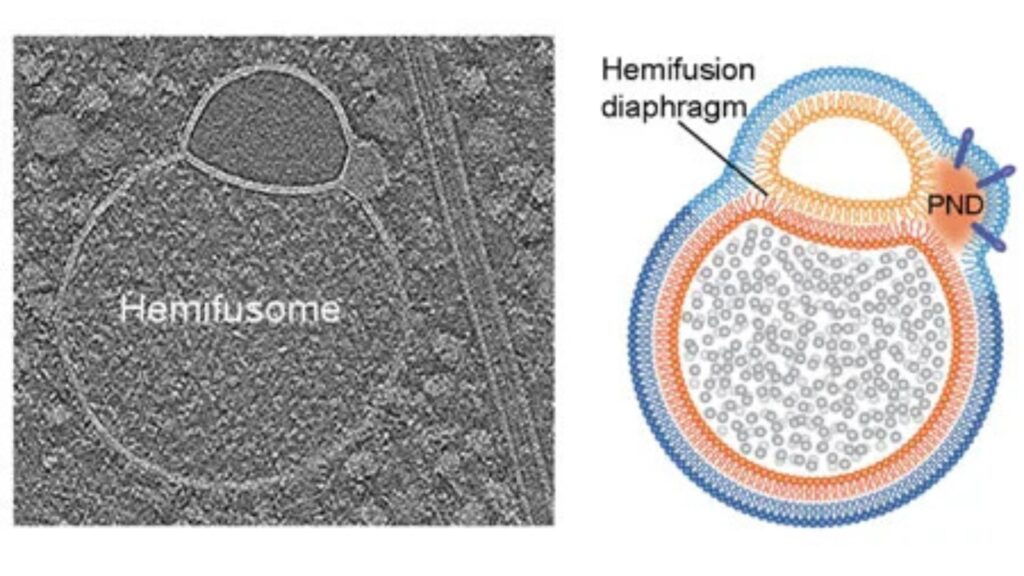Recently discovered, the hemifusoma is a small structure that would intervene in the sorting of cellular waste. Spotted thanks to advanced imaging, it is more present in cells than scientists imagined. Its discovery opens the way to possible new treatments in rare diseases.
“This is the first time that someone has visualized this structure within cells”says Seham Ebrahim. She is a deputy professor in the Department of Molecular Physiology and Biological Physics at the University of Virginia. She is also the co-author of a new study, presented on June 3, 2025 in a press release from the same university.
Who would have believed it? If the scientific world thought of knowing everything about the cells and structures that make them up, it was The finger in the eye to the elbowto use the expression. Improbable and, however, not impossible, since it happened: researchers from the Faculty of Medicine of the University of Virginia and the National Institutes of Health (NIH) have discovered a new cellular structure unknown so far. His name? Hemifusoma.
And bodies is a specialized structure which provides a particular function in the cell.
Published on May 17, 2025, in Nature Communicationtheir study explains the role of this new organization in the cell recycling system.
Hemifusoma sorting center, hello!
“The hemifusoma is a whole new organeli, and we think that it plays a central role in a newly discovered path for the construction of multi -works bodies – key recycling centers within our cells”, Ebrahim explique.
Multivated bodies are already known to scientists who sort cell waste. Hemifusomes are formed and dissolved according to the needs of the cell. Their role? Facilitate the formation of vesicles and multi -purpose bodies. “This process is essential for cell sorting, recycling and elimination of debris”said the press release.


“We believe that the hemifusoma contributes to the management of packaging and the treatment of materials by cells, and that, if something is wrong in this system, this can contribute to diseases affecting many systems of the organism. »»
More concretely: “You can compare the vesicles with small delivery trucks inside the cell”Ebrahim. “The hemifusoma is like a loading quay where the vesicles connect and transfer their cargo. This is a step in the process of which we ignored existence. »»
By understanding how this new cellular path operates, scientists allow the exploration of new treatments, especially for hereditary diseases where the problem is in the cellular management of waste.
But how have hemifusomes go unnoticed so far?
This structure could be highlighted for the first time thanks to a new technique: “Cryo-electronic CT scope, a cutting-edge imaging technique that freezes cells by flash and 3D snapping in nanometric resolution of their internal architecture”explains Bechara Kachar, co-author of the study. “This allowed us to see cell structures which were completely invisible with conventional microscopy. »»
However, after having discovered them, scientists realized that these small structures were quite frequent in certain parts of our cells.
“It’s just a start”says Seham Ebrahim. “Now that we know that hemifusomes exist, we can start studying their behavior in healthy cells and what is happening in the case of dysfunction. This could open the way to new strategies to treat complex genetic diseases. »»



All tech news in the blink of an eye
Add Numerama to your home screen and stay connected to the future!


